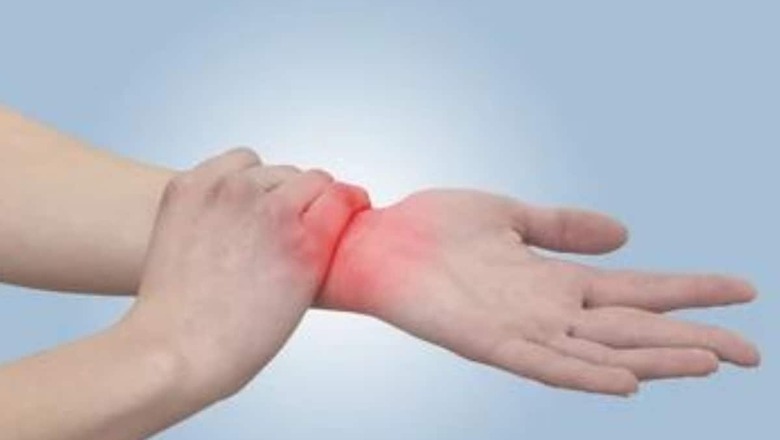
views
When we think of workouts, it’s usually focused on body parts like arms, chest, legs back and shoulder. But what about the wrist that we need to perform a wide range of tasks? Neglecting proper care and exercise for our wrists can lead to discomfort, stiffness, and even potential injuries. Whether you spend long hours typing on a keyboard, engaging in repetitive motions, or simply want to improve the strength and flexibility of your wrists, incorporating a few simple exercises into your routine can make a significant difference.
Anshuka Parwani, Yoga instructor and Holistic Wellness expert shared some exercises aimed at alleviating wrist pain. According to her, individuals frequently encounter wrist discomfort during their workout sessions, which may be attributed to factors such as ligament strain, sudden muscular pressure during exercise, and limited mobility.
Take a look:
A post shared by ANSHUKA YOGA (@anshukayoga)
“Strong wrists are very important as they play a major role in stabilizing the arms during various fitness drills and workouts,” Anushka wrote in the caption.
Here are some simple movements and exercises prescribed by the yoga instructor:
- Palms Open and CloseThis simple yet effective technique promotes relaxation, mindfulness, and stress relief. To perform this exercise, start by sitting in a comfortable position with your spine straight and shoulders relaxed. Begin by bringing your hands together in front of your chest, with your palms facing each other. Take a deep breath in, and as you exhale, slowly open your hands, spreading your fingers wide apart. Pause for a moment, feeling the sensation of openness and expansion. Then, as you inhale, gradually close your palms, bringing your fingers back together. Repeat this movement 10 times, synchronizing your breath with the opening and closing of your hands.
- Wrist RotationsBegin by extending your arm in front of you, palm facing down. Slowly rotate your wrist in a circular motion, moving clockwise for 10 to 15 seconds. Then, switch to counterclockwise rotations for the same duration. Perform 10 repetitions in each direction, taking care not to strain or force the movement. Similar exercises include wrist circles, wrist waves, and wrist stretches which help to lubricate the joints and increase blood flow to the wrists.
- Palm Open SidewaysBegin by sitting or standing in a comfortable position with your back straight and shoulders relaxed. Extend your right arm straight out in front of you, parallel to the ground, with your palm facing down. Keeping your arm straight, slowly rotate your palm to face up and then continue rotating until your palm is facing sideways. Hold this position for a few seconds, feeling a gentle stretch in your wrist and forearm. Slowly rotate your palm back to the starting position, with your palm facing down. Repeat the movement 10 times. Switch to your left arm and perform the same exercise, following the same steps.
- Palms Open Up and DownStart by sitting in a comfortable position with your back straight and your feet flat on the floor. Extend your arms straight out in front of you, keeping them parallel to the ground. Your palms should be facing down. Slowly open your palms, spreading your fingers as wide as possible. Feel the stretch in your wrists and fingers, but make sure not to push yourself too hard. Hold this position for a few seconds. Next, slowly close your palms, bringing your fingers back together. Again, feel the stretch in your wrists and fingers. Hold this position for a few seconds. Repeat the opening and closing motions of your palms for about 10 repetitions. This exercise is a great way to relieve wrist pain and improve flexibility.
Incorporating these simple exercises into your daily routine can strengthen the muscles and joints in your wrists, helping to increase mobility, prevent pain, build grip strength, reduce the risk of injuries and enhance overall wrist health. They require minimal equipment and can be easily performed at home or in the office. If you experience any persistent pain or discomfort, it is advisable to consult a healthcare professional for further guidance.
What's your reaction?

















Comments
0 comment